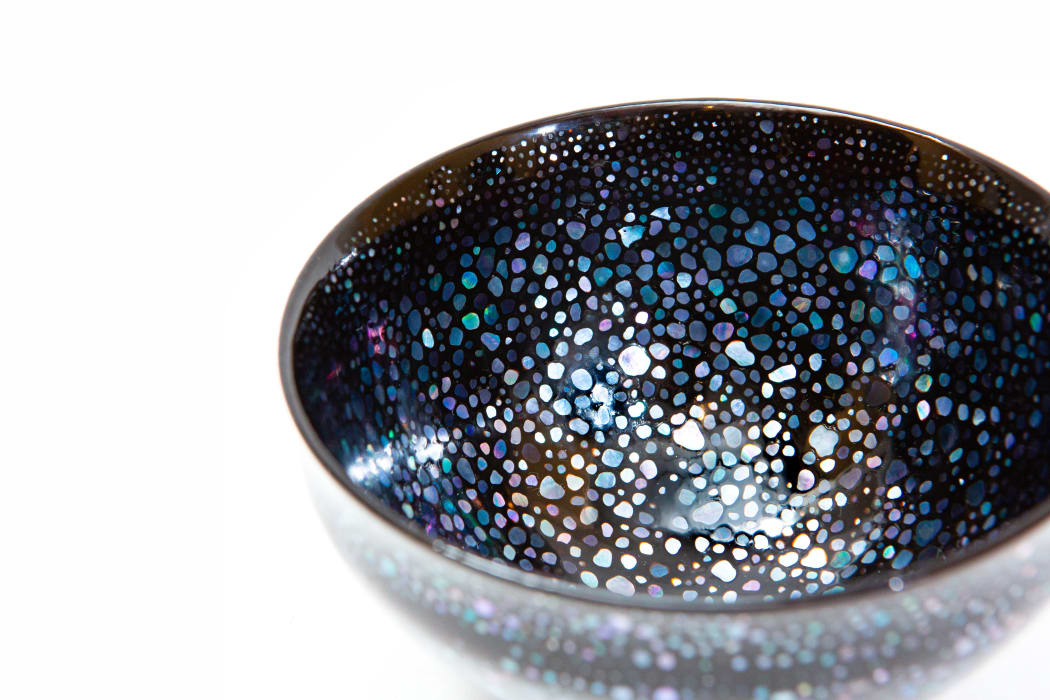
Tenmoku is also known as the 'hare's fur effect. When there is an excess of iron oxide, oil spot effects appear on the surface. As you slightly tilt the bowl from side to side, the colors glisten and are padded together like clumps of animal hair.
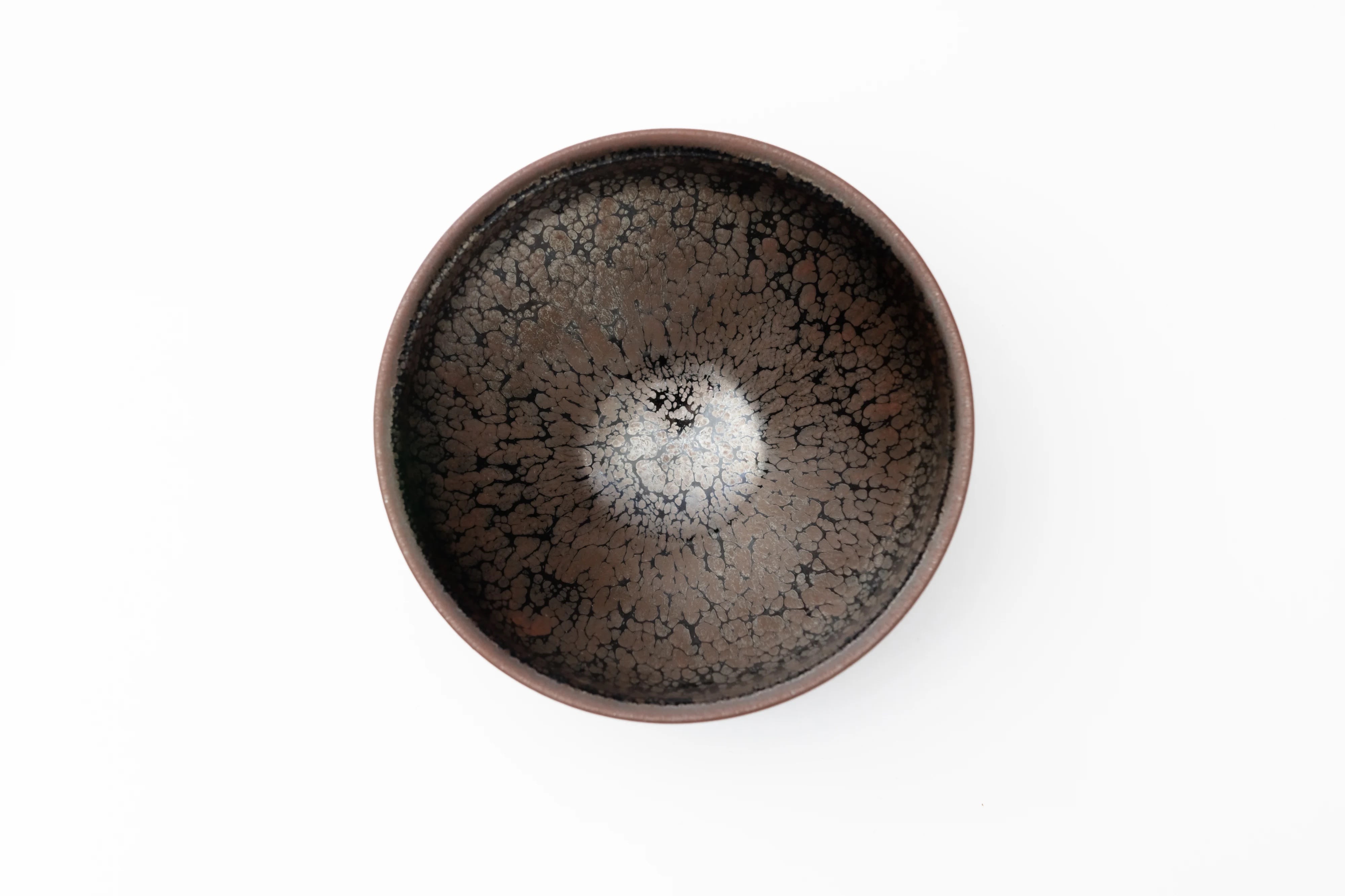
Artist Hideyuki Fujisawa (1972) studied lacquer at Lacquer Kosha. His work aims to perfect a lacquer version of the Yuteki Tenmoku Tea Bowl. His transformative use of traditional lacquer materials explores the use of brushing pure layers of lacquer over a carved wooden surface. Fujisawa strategically and meticulously places mother of pearl on the lacquer tea bowls, adding a touch of elegance and refinement.
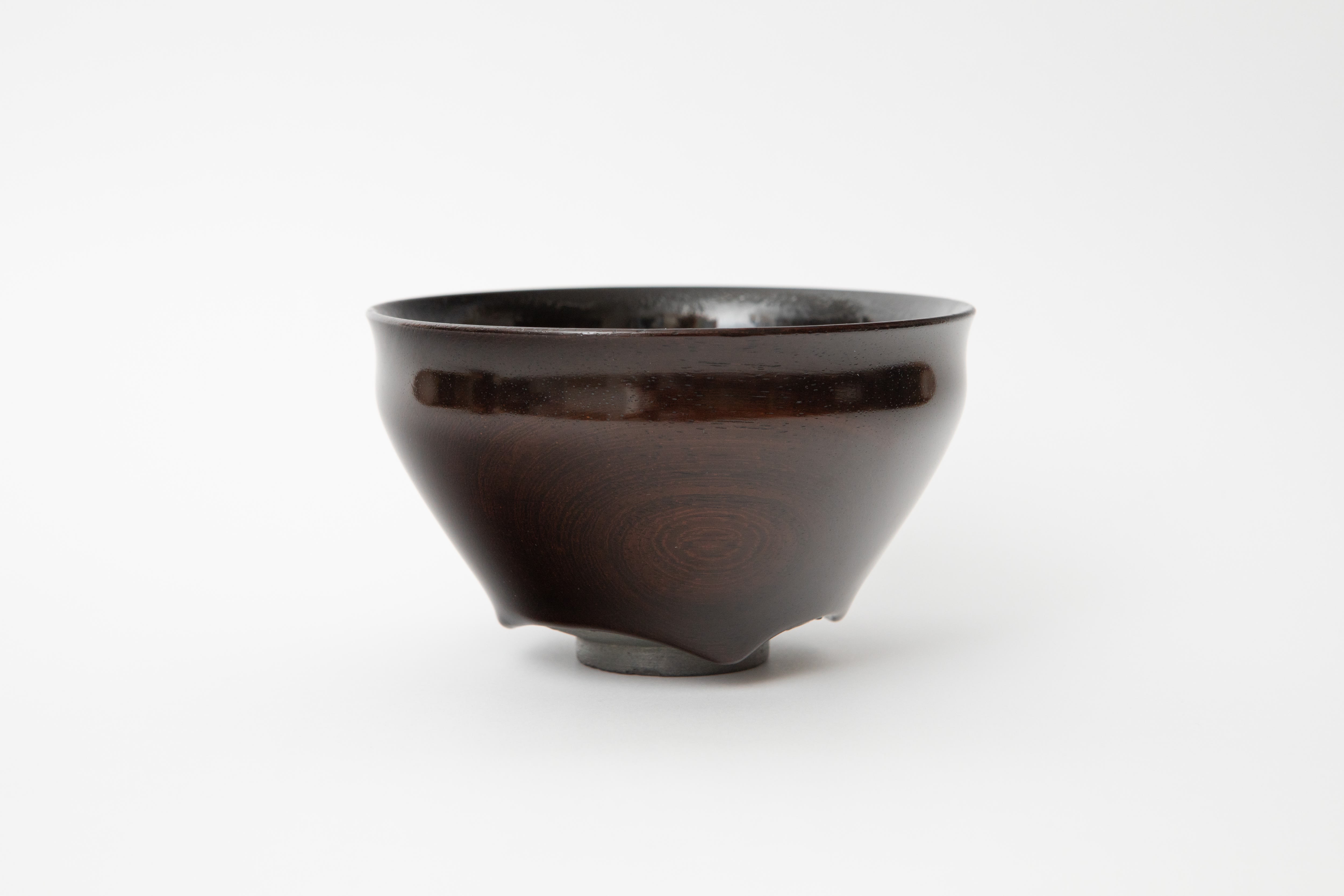
Uruishi Lacquering is an ancient technique of applying layers of the sap of Rhus Vernicifera to furnishings. Natural lacquer comprises resins and must be used in up to 15 successive coats, with sanding or hand rubbing between each layer. This process gives a perfectly smooth ground on which an artist can apply the decoration. The process is long and complex and does not always produce the desired results. It is possible to mimic the appearance of lacquer, however, using oil-based paints and varnish is much more intensive. Hideyuki Fujisawa's surreal surfaces are a unique individual take on the traditional tenmoku style.
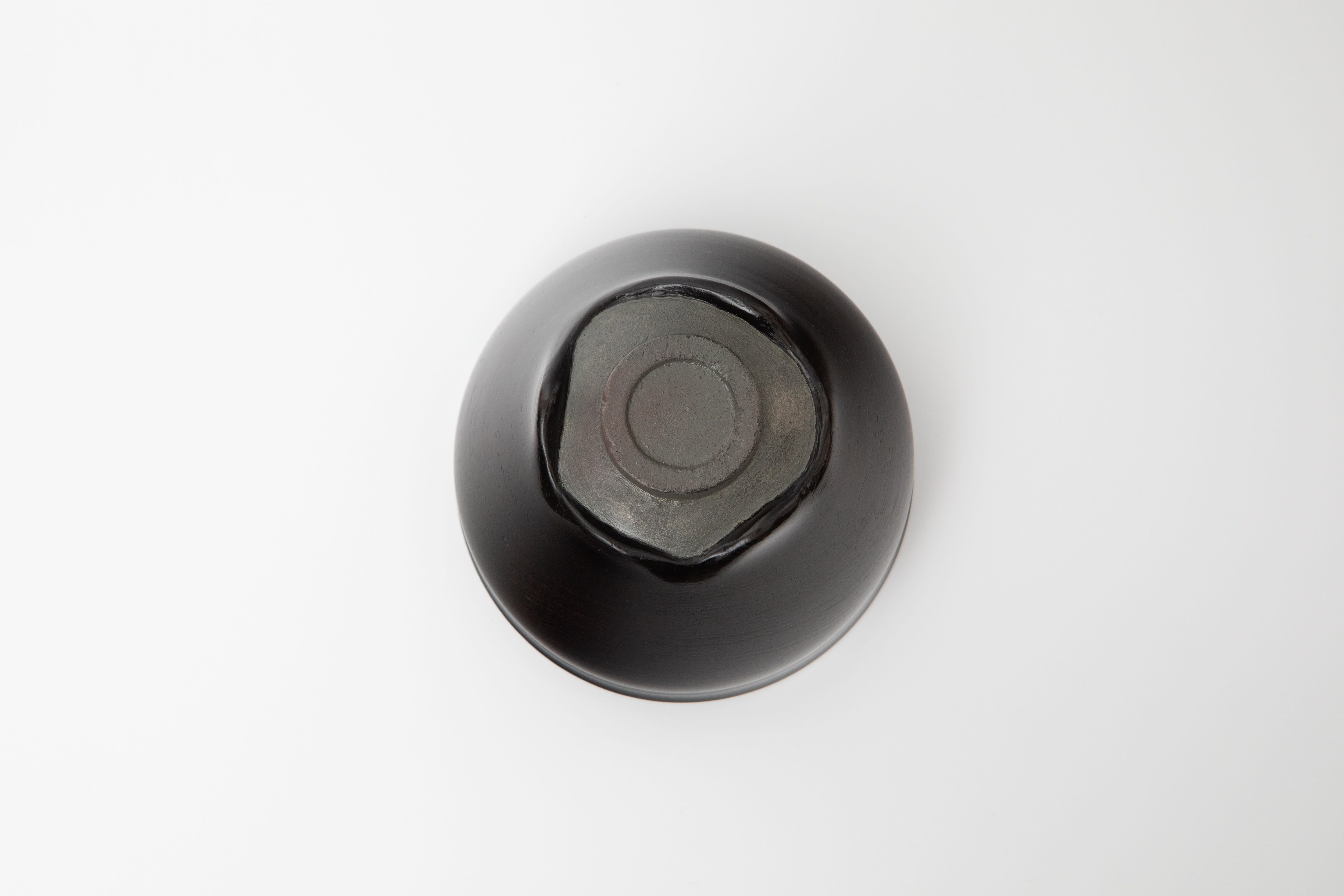
Hideyuki Fujisawa, 螺鈿曜変天杢茶椀, H2 3/4 x W4 5/8 x D4 5/8 in, (C22930)
Mother of Pearl, also called nacre, is the iridescent inside lining of a mollusk shell. It is most commonly found in three types of mollusks—pearl oysters, freshwater mussels, and abalone. The mollusk is coated with a nacre—an organic substance that gives mother-of-pearl its iridescent effect and distinct beauty to protect the inside of their shells from parasites and foreign irritants. This multicolored iridescence is caused by how light reflects on the layers of nacre on the body.
Dating back to the 8th century, Mother of Pearl lacquerware was used in some of the earliest Asian cultures.

Raden (螺鈿) is a painstaking decorative technique used in lacquerware. Cut pieces of mother of pearl are carefully carved into the surface of the lacquer or wood. Raden was imported during the Nara Period (710 – 794) from Tang Dynasty China ( 618 – 907) and was incorporated in amber and tortoiseshell items. During the Heian Period (794.- 1185), Raden was used in architecture and lacquerware. This decorative technique grew in popularity worldwide when Japan's borders were still open to the outside world in the early 17th century. The method was used in many European-style items, such as chests of drawers, coffee cups, and other decorative arts. During the Edo Period (1600 – 1867), Raden continued in popularity. After the reopening of Japan to foreign trade in the 1850s, raden work export markets boomed.
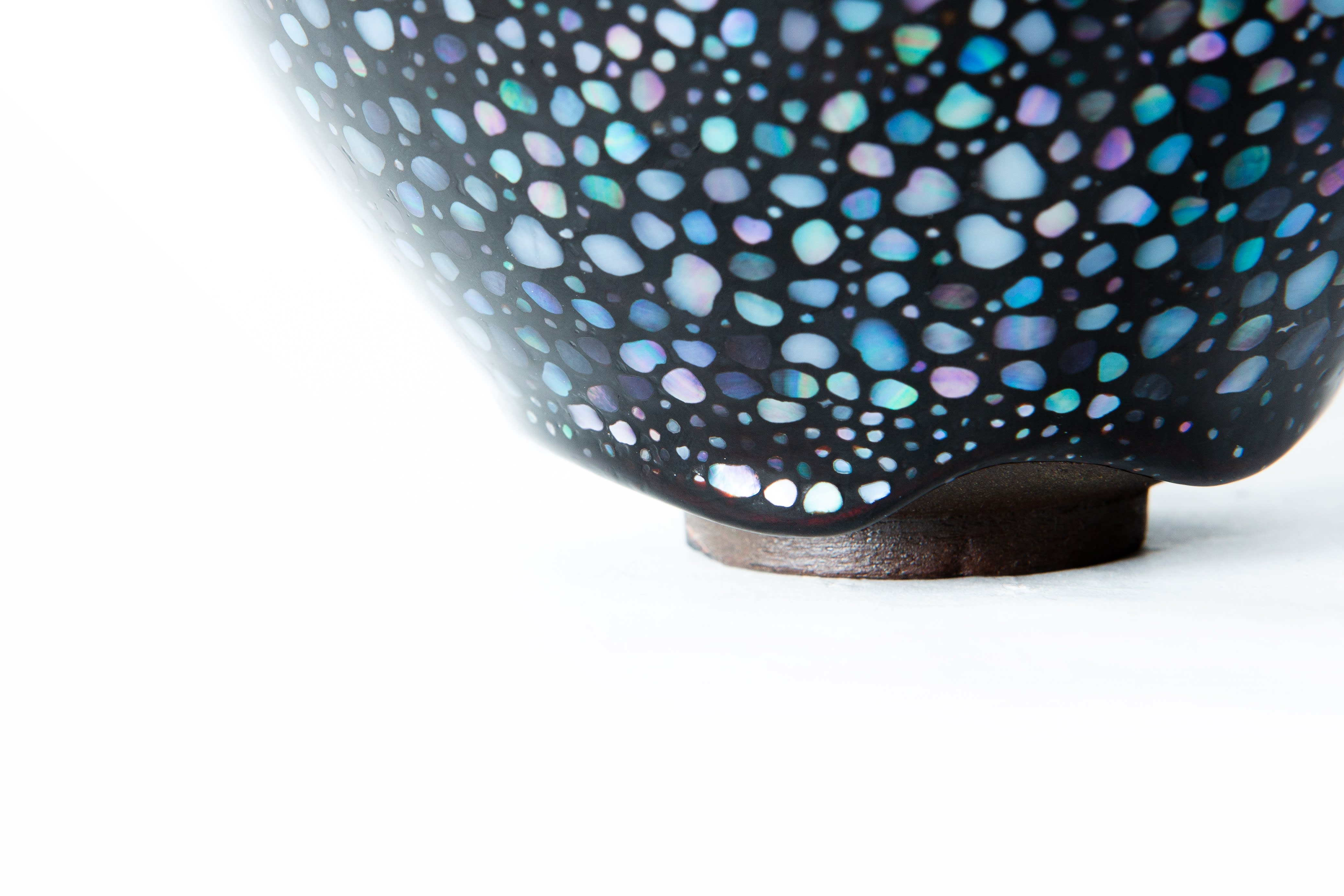
Hideyuki Fujisawa, 油滴天杢茶椀 Yuteki Tenmoku Tea Bowl, H2 7/8 x W4 3/4 x D4 3/4 in, (C22101)
Hideyuki Fujisawa's Yuteki Tenmoku Tea Bowl is a whimsical use of traditional lacquer materials. This tea bowl was made by brushing pure layers of lacquer over a carved wooden surface. The form of the tea bowl was meant to mimic that of a thrown traditional tenmoku tea bowl, even taking into consideration the areas where the "glaze" pools around the base. Fujisawa strategically and meticulously placed Mother of Pearl around the piece's surface, adding a touch of elegance and refinement to the tea bowl. The iridescent reflections of the Mother of Pearl dance with the light creating a rich cosmic atmosphere that can be held in the palm of your hand.
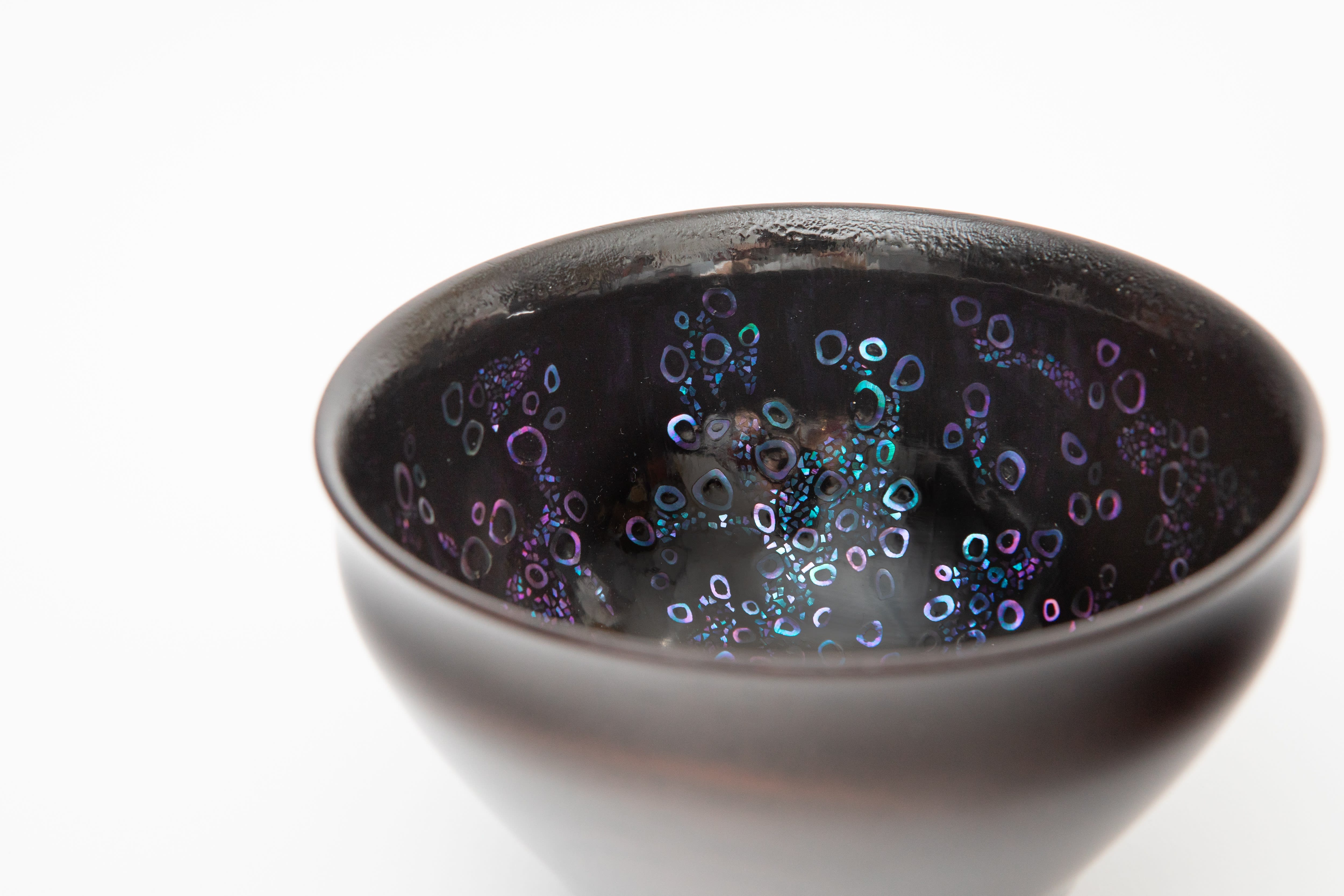
Yuteki means "oil drops," inspired by the physical pattern, while tenmoku broadly refers to the form of the cup. In fact, during the Muromachi period (14th–16th century), they used to be known as yuteki or yuteki tenmoku. Hideyuki Fujisawa's work stands out for its exceptionally refined shape and patterning.
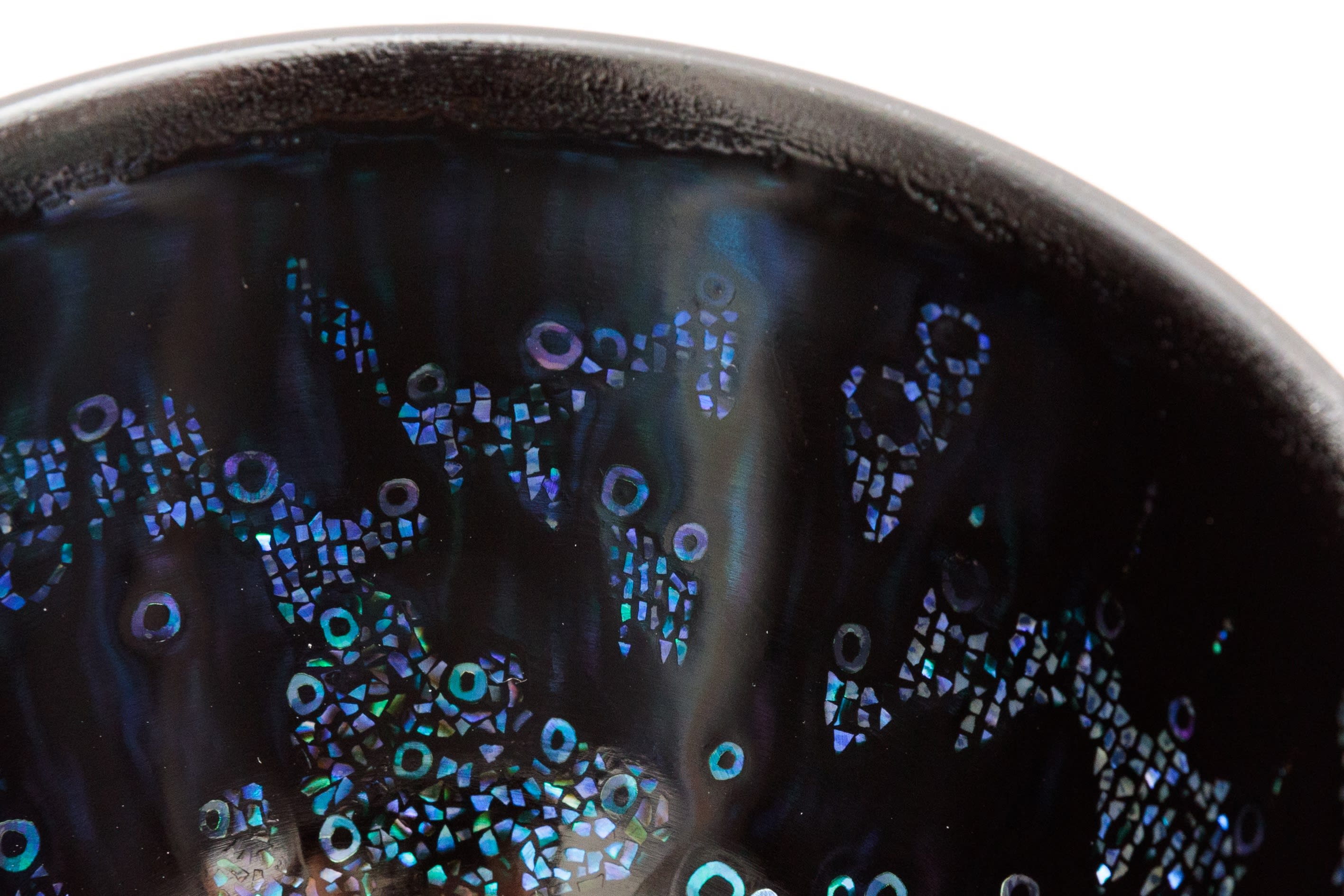
Hideyuki Fujisawa, 曜変天杢茶椀, H2 1/2 x W4 1/8 x D4 1/8 in, (C23672)
